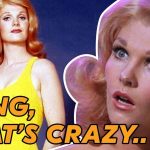The Good, the Bad and the Ugly is considered by many as the greatest western movie of all time. Even though Once Upon a Time in the West also has a claim to that title, particularly amongst critics. Both movies directed by legendary filmmaker Sergio Leone who no-doubt must have enjoyed seeing critics argue over which of his two films are the best western of all time.
The Good, the Bad and the Ugly starred Clint Eastwood, Eli Wallach and Elli Wallach as three men in the American Civil War era. Who compete to locate Confederate gold that has buried at a secret grave in a cemetery. But what many people may not be aware of, is how close the film came to not even starring Clint Eastwood. Join us as we take a look at why the Hollywood superstar didn’t want to be a part of The Good, the Bad and the Ugly and other interesting behind the scenes facts about the classic western.
Clint Eastwood didn’t want to share the screen with two other big names
By the mid-1960s, Clint Eastwood’s career already packed with westerns. Understandably, the Hollywood star was looking to do something new and refreshing. This is likely one of the reasons that when asked to appear in The Good, The Bad & The Ugly, he originally declined. But his issues with the project didn’t stop there. Eastwood disappointed to find out that he’d be sharing the screen with two big actors namely Eli Wallach and Lee Van Cleef. Who’d already co-starred with Eastwood in For a Few Dollars More.
In Eastwood’s view, the increasing reliance on an ensemble was crowding him out of the movie. In response to the story, Eastwood reportedly stated, “If it goes on this way, in the next one I will be starring with the American cavalry.” This issue then escalated by the fact that Wallach’s character had given all the juicier dialogue.
Production delayed because of Clint Eastwood’s salary demands
When Eastwood initially agreed to star in The Good, The Bad and The Ugly. The third film in what is now known as The Dollars Trilogy. He disappointed after reading the script and discovering that he’d be sharing the screen with two other major players. The issue was a big deal for Eastwood, big enough in fact, that negotiations for the third film fell apart, and Eastwood’s agents and publicist had to work incredibly hard to bring him back to the production.
What’s most interesting about this was that, because the films still had not come out in America, Eastwood was not yet the huge star that we know him to be today. This meant that he had less negotiating pull than people today would expect. With the tenacity and hard work of his agents, they were ultimately able to get Eastwood a $250,000 salary for the film. Again, that may not seem like a lot by today’s standards, but that was actually more than the entire budget of A Fistful of Dollars. The deal didn’t end there, however, he’s given 10 percent of the profits when the film finally released in America. As a cherry on top, he also promised a new Ferrari 275 GTB. He accepted the job.
If you’re enjoying this video be sure to hit that like button and subscribe to the channel for more great content. Now, back to more interesting behind the scenes facts about The Good, The Bad, and The Ugly.
Clint Eastwood didn’t enjoy smoking cigars
Throughout The Good, The Bad, and The Ugly, Eastwood’s “Man With No Name” character is recognisable for the little cigars that he’s constantly smoking. A perfect example of Eastwood’s acting prowess, you’d think he’d been doing it all his life, but in reality the actor really hated them. Sergio Leone, the legendary director of Spaghetti Westerns and the Dollars Trilogy, was famous for being a perfectionist who liked doing multiple takes.
This led to Eastwood having to smoke countless cigars over and over again throughout the movie’s production, and to put it frankly, this disgusted the actor. Eastwood even went as far as to once issue Leone an ultimatum. The actor told him that he’d better film the cigar shots right the first time or he’d quit. Luckily, it never came to this and the result was an all time western classic.
Clint Eastwood turned down Once Upon a Time in the West
By the end of production on The Good, The Bad and The Ugly, Eastwood done working with Leone. The famous perfectionism of the director proved to not fit with Eastwood’s disposition. and the actor resolved that he would form his own company and start making his own movies. Leone, on the other hand, not necessarily done with Eastwood. The director even flew to Los Angeles and pitched Eastwood the role of Harmonica in Once Upon a Time in the West. Eastwood not interested, and the role played to perfection by Charles Bronson.
Once Upon a Time in the West has become a classic of the genre, appearing on prominent all-time critics lists. Including Time’s 100 greatest films of the 20th century and Empire’s 500 greatest movies of all time. Where it was the list’s highest-ranking Western at number 14. Popular culture scholar Christopher Frayling regarded it as “one of the greatest films ever made”. Rotten Tomatoes reports a 95% approval rating based on 63 reviews. With a weighted average of 9.16 out of 10. The movie labeled a landmark Sergio Leone spaghetti Western masterpiece featuring a classic Morricone score.
They had to film the Bridge Explosion twice
For the scene in which Eastwood and Wallach’s characters decide to blow up the bridge that leads to the cemetery where they believe the gold is buried. The production hired hundreds of Spanish soldiers to stand in for Civil War soldiers. It’s an incredibly complicated set up as the soldiers all had to in the right, safe place. And Leone set up several cameras to film the moment. Sticking to his well known perfectionist style. Leone determined to wait as long as it took for the perfect light. In order to capture the explosion.
As the two actors, Eastwood and Wallach watched from a nearby hilltop. The same hilltop where Eastwood apparently practiced his golf swing, Leone watched the sky, waiting for the right light. The word “Vaya” the very specific signal to blow up the bridge and the crew gave a Spanish officer the honor of igniting the blast. Unfortunately, a member of the crew tried to hurry a cameraman. While doing so, he said “Vaya”. The officer heard the word and blew up the bridge.
The special effects expert who accidentally triggered the explosion with his words was quick to flee the set. Leone looked over the mistake and simply said, “Let’s go eat.” The bridge had to rebuilt, and the scene re-shot, driving up the budget of the film.
Eli Wallach almost seriously injured three times
While Clint Eastwood may have had the hardest time deciding whether to be a part of the movie. It was Eli Wallach who had the hardest time during the shoot. For the scene in which he’s about to hanged while sitting atop a horse. With the idea that the horse would ushered away, thus leaving him to hang. Eastwood supposed to fire a rifle at the rope. A small explosive charge in the rope would then detonate, thus freeing Wallach.
What Leone and everyone on set didn’t count on that the horse would spooked by the sound of the rifle. As Eastwood fired the gun, the horse took off at a dead gallop with Wallach on its back, and his hands still tied. Wallach recalled that the horse took him a mile before it stopped.
Another incident occurred during the scene in which Wallach’s character cuts his handcuffs under a moving train to escape Union captivity. Leone once again demonstrated his perfectionism by wanting to make sure the audience saw Wallach himself. And not a stuntman, lying beside the train as it sped by. Wallach agreed to do the stunt how his director wanted. But then realized after the first take that a metal step affixed to one of the cars had missed his head by inches. Wallach realized that if he had raised his head four or five inches he’d have decapitated.
Wallach’s troubles weren’t done there, as during the film’s climax, when his character unearths the gold hidden in the cemetery. The crew applied acid to one of the bags of gold. So that when Wallach hit it with his shovel it was guaranteed to split open on cue. What the crew didn’t explain to the actor however, was that they were keeping the acid in a bottle that once held a brand of lemon soda that Wallach enjoyed. Wallach saw the bottle and took a sip, thinking it was his favorite drink. Luckily, he realized his mistake before it was too late. Avoiding a truly horrendous and tragic accident.
Were Clint Eastwood’s issues with The Good, The Bad and The Ugly justified. Or should he have been more grateful to be a part of a now classic western? Should Eastwood have taken the role of Harmonica in Once Upon a Time in the West. Or was Charles Bronson’s performance perfect for the movie?
Let us know in the comments section below and don’t forget to subscribe to Facts Verse for more. Click the bell icon to stay updated on all our latest content.


